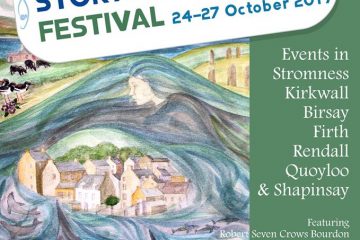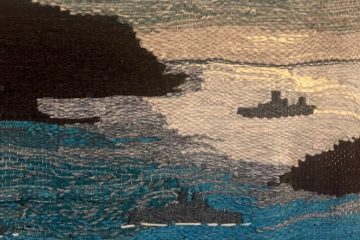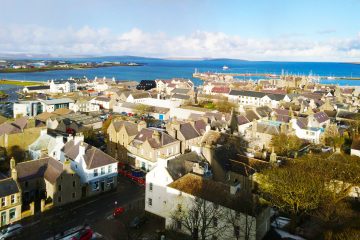Orkney Farming Celebrations
August is a very busy time for Orkney, not just thanks to summer visitors. This month is a peak time for another very important Orkney industry – farming.
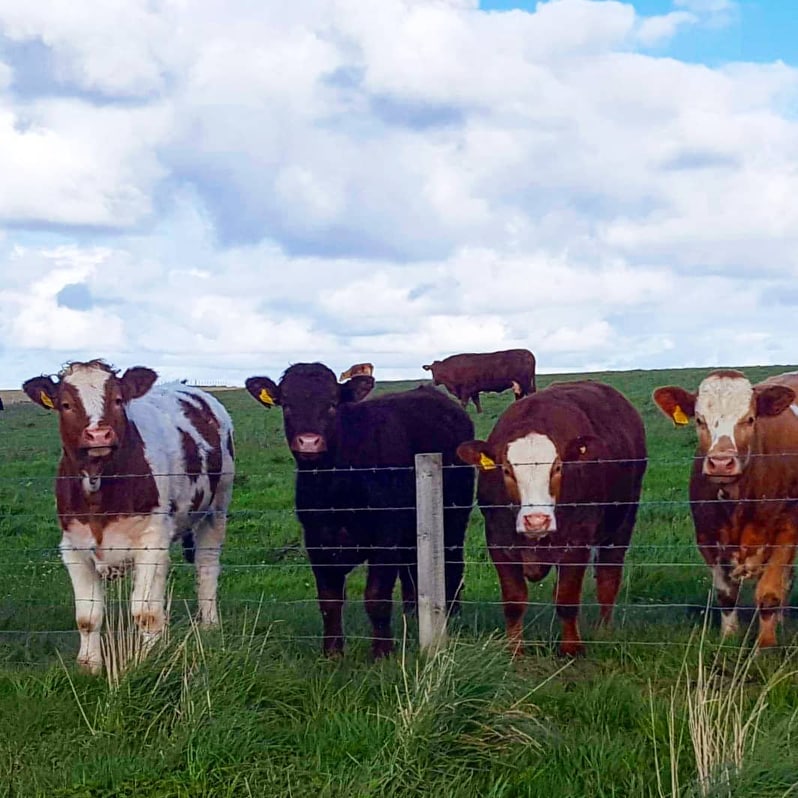
The Importance of farming
Farming is deeply significant to the Orcadian culture and has been for millenia. The most famous site on Orkney, Skara Brae, represents the beginning of agriculture on these isles over 5000 years ago.
Today, of the 99,000 hectares which make up Orkney, 90% of the land is used for some form of agriculture. The main use is grazing for livestock. There are 100,000 more sheep than people on Orkney! Why? Because grass grows so well in the Orkney climate with its frequent rain and long daylight hours in the summer.
County shows
August is the final summer month. Before the busy harvest time begins there is a chance to celebrate. The shows are a hive of activity including animal competitions, games, tractor and equipment displays and stalls from charities and businesses. Sanday, East Mainland, Shapinsay, South Ronaldsay and Burray, Dounby had their own shows. The month of events ends with the Orkney County Show which is one of the biggest events of the year.
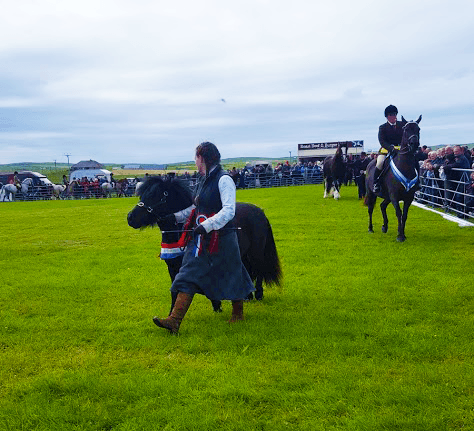
I was lucky enough to go along to the Dounby show. I couldn’t believe how busy it was! I’ve never seen so many Orcadians in one place. Amongst the hustle and bustle of stalls was a performance arena. Here I enjoyed seeing the parade of prize winning horses, cows and even a lone goat. My highlight was seeing the young horse riders compete in high speed games. Very impressive.
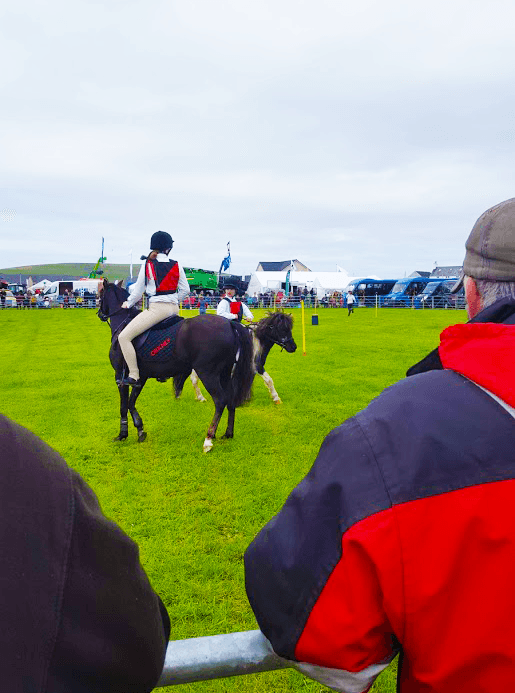
Horses and ploughing
Down in St. Margaret’s Hope one day a year you can hear the jingling of bells. This merry noise signals the beginning of the Festival of the Horse. For over 200 years the children of this village and the surrounding farms have dressed up as show horses. These elaborate costumes are black suits decorated with ribbons, charms, pom-poms, rosettes and wool. The “ploughing harnesses” are often family heirlooms. Bagpipes accompany the children’s costume parade. Then the costumes are judged by local experts.
Unfortunately photos don’t do them justice. Seeing the “horses” as they are called march out was truly a sight to behold. Each costume was incredibly detailed and creative. I was really impressed with the craftsmanship.
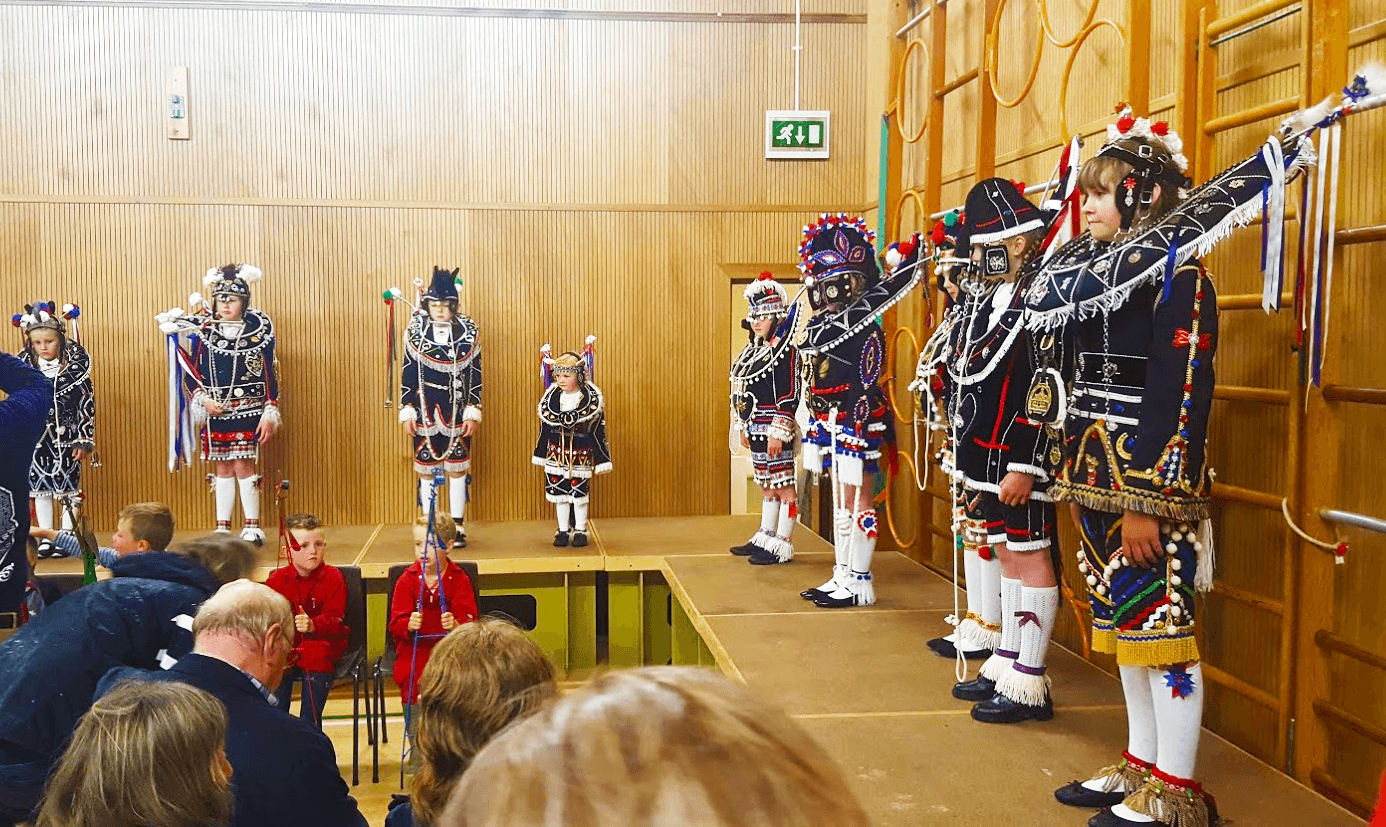
The Festival of the Horse is followed by the boys ploughing match. The adorable little ploughs are also handed down over generations. The boys are around 9 years old when they compete on the beach.
Both traditions celebrate the agricultural heritage of the region. I was glad to see how popular the parade was. It’s great to see the tradition thriving after all this time.

